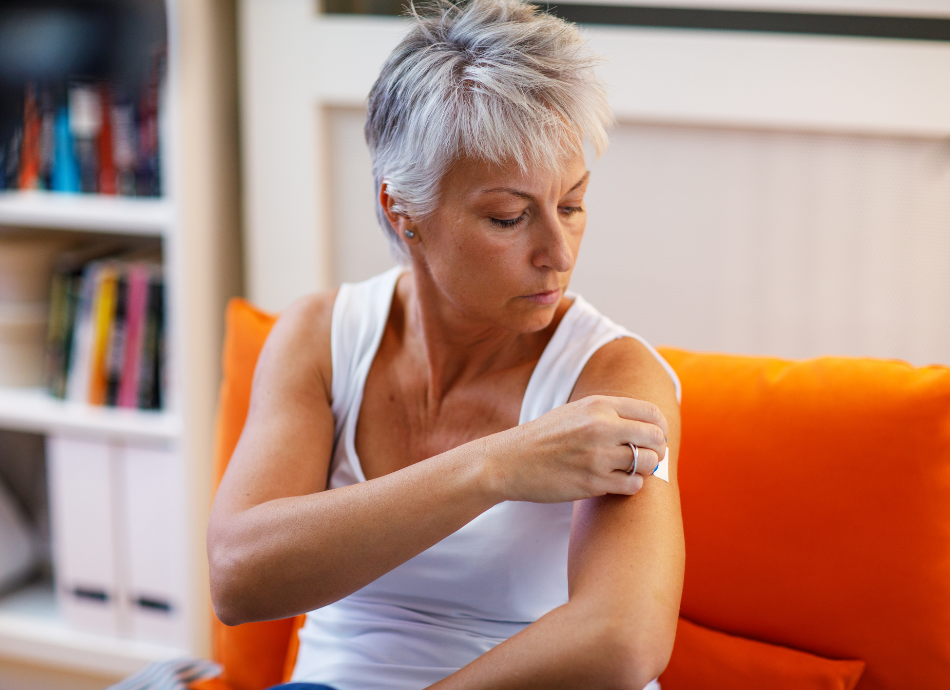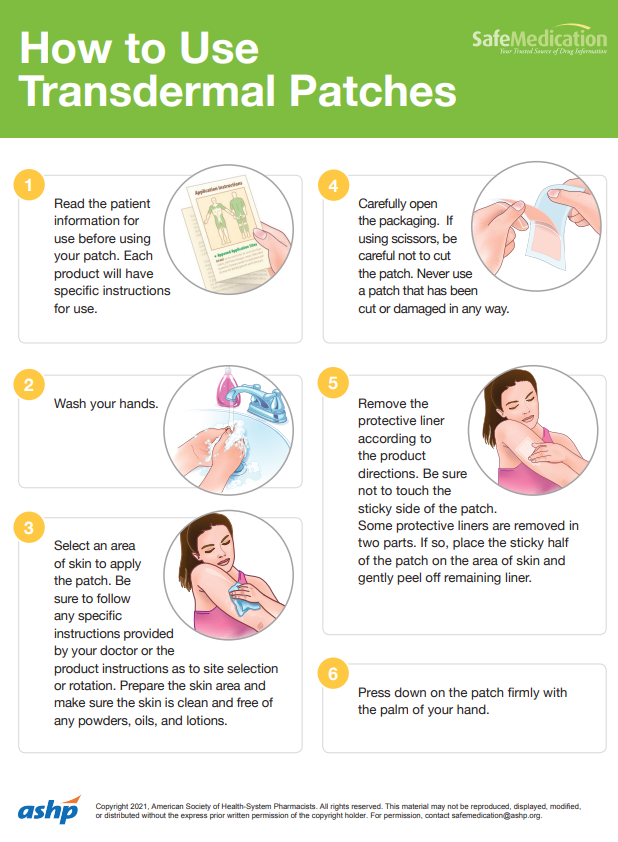Wishing everyone happy holidays and a joyful New Year from the Healthify team. Don't forget to Slip, Slop, Slap and Wrap!
Using medicine skin patches safely
Also called transdermal patches
Key points about medicine skin patches
- Medicine patches (also called transdermal patches) are attached to your skin to slowly release medicine from the patch into your body over a period of time.
- There are a number of medicines available as patches.
- Find out how to use medicine skin patches safely.

Medicine patches (also called transdermal patches) are attached to your skin to slowly release medicine from the patch into your body over a period of time.
- There are a number of medicines available as patches including pain relievers, nicotine, hormones and medicines to treat angina and motion sickness.
- The instructions for how to apply each patch, and how often, are different for each type of patch.
- Your pharmacist will explain how to use your medicine patch. There should also be a leaflet inside the box, read it before using your patch.
- Each product will have specific instructions, but general guidance is provided below.
Follow the instructions carefully for the use of your patch. Always ask your pharmacist how to apply your patch. Each patch will have specific instructions for use. Here is some general guidance.
Placement of the patch
- Always check the best place to apply your patch: Each patch has specific instructions. Avoid applying patches under tight clothing or elasticated waistbands.
- Before applying the patch: Make sure your skin is clean and dry. Don't put moisturiser, creams or powder on the skin immediately before applying the patch, as this may stop it from sticking properly. Choose an area with little or no hair, that's free of scars, cuts, or irritation. Don't apply the patch to broken or irritated skin, or skin that's been recently shaved. Don't apply the patch to recently tattooed skin because it may be too sensitive. Wait for your skin to heal completely before applying the patch to that area.
- Press the patch firmly on the skin with the palm of your hand to make sure it's attached. Check during the day to make sure the patch is still in place, especially after sleeping, changing clothes, or showering. If it becomes loose, cover it with an extra adhesive overlay if provided or a sticking plaster.
- Record the date and time it was put on: This is useful for patches that are changed once a week or every few days.
- Apply each new patch to a different area of skin: The adhesive (glue) on the patch can cause skin irritation. Changing the position it's applied to can reduce the risk of irritation. If the skin does get irritated, the area gets a chance to heal.
- Take your old patch off before applying the new patch: Carefully dispose of the old patch. See how to dispose of your patch safely.
Cutting patches
Ideally, patches shouldn't be cut but, due to supply issues and shortages or when smaller doses are needed, it's sometimes necessary to cut them. Not all patches can be cut — this depends on how the medicine is stored within the patch. Your healthcare provider will tell you if your patch can be cut and if the rest of the patch can be used later.
Here is some guidance when cutting patches:
- Cut the patch diagonally from corner to corner. For round patches, fold in half and cut along the folded line.
- If the other half can be used for the next dose, store it in an airtight bag, until you're ready to use it.
Note: Not all patches can be cut. If you only need a part dose and your patch can't be cut, your healthcare provider will tell you what to do. They may advise you to:
- Use a plastic dressing under your patch, so that part of the patch is on your skin and part of the patch is covered. This way, the part of the patch on your skin will deliver the part dose.
- Fold the patch in half with the non-sticky sides together, then one of the sticky sides is placed on your skin and taped in place. Make sure you cover the other sticky side of the patch that you're not using with sticking plaster.
- Ask your healthcare provider to show you if you're not sure what to do.
Video: How to properly apply a transdermal patch
(Apotex Inc, Canada, 2015)
Showers, baths or swims
You can have showers or baths and go swimming while wearing a medicine patch. It's a good idea to press your finger around the edge of the patch first to make sure it is fully sealed to your skin and no air or water can get in. Check the patch is still on properly afterwards and dry the area around the patch carefully.
Medicine patches and heat
Fever or high temperatures may increase the dose you get from your patch. Heat can release the medicine faster and can cause an overdose. Try to avoid heat on top of the patch, eg, a heating pad or hot water bottle and avoid soaking in a hot bath or sauna while wearing your patch, If you have an ongoing fever, contact your healthcare provider.
If you're having a scan (such as MRI) or a procedure
Patches with aluminium in them can cause skin burns during some medical procedures or scans.
Some patches may need to be removed just before the scan because they can overheat and cause skin burns. Tell your doctor or X-ray technician about any medicine patches you're wearing before having:
- magnetic resonance imaging (MRI)
- diathermy
- cardioversion procedures (which return your heartbeat to a normal rhythm).
Patches can keep releasing medicine after the usual duration of use. To avoid overdose make sure you remove your old patches when a new one is put on. When you remove a patch, fold it in half so that it sticks to itself, before throwing away.
It's important to store and dispose of medicine patches out of the reach of children or pets. To a child, medicine patches look like stickers or bandages. There are many reports of children finding patches and sticking them on their body. Children and pets can also chew, suck, or swallow patches.
If you discover a patch is missing from your body, stop everything. Find it before your child or pet does.
Resources
Transdermal patches – how to use(external link) American Society of Health-System Pharmacists, US
5 questions to ask about your medications(external link) Health Quality and Safety Commission, NZ English(external link), te reo Māori(external link)
Medicines and side effects [PDF, 91 KB] Healthify He Puna Waiora, NZ, 2024
References
- Safe use of transdermal patches(external link) New Zealand Formulary
- How to use transdermal patches(external link) Safe Medication, US, 2021
- Can transdermal patches be halved?(external link) Christchurch Medicines Information Service, NZ, 2023
- Using transdermal patches safely in healthcare settings(external link) Specialist Pharmacy Services, UK
Brochures

American Society of Health-System Pharmacists, 2021

Medicines and side effects
Healthify He Puna Waiora, NZ, 2024

Health Quality and Safety Commission, NZ, 2019
English, te reo Māori
Credits: Sandra Ponen, Pharmacist, Healthify He Puna Waiora. Healthify is brought to you by Health Navigator Charitable Trust.
Reviewed by: Angela Lambie, Pharmacist, Auckland
Last reviewed:





